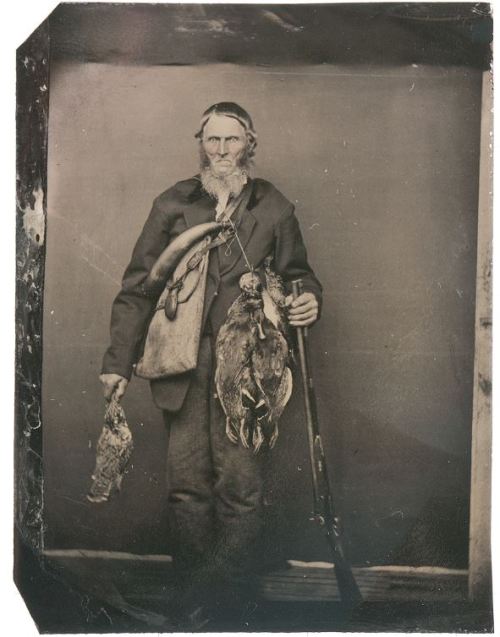St. Patrick's Day in it's native Ireland is a significant cultural holiday with parades and such. Here in America, it is an excuse to get blind, stinking drunk. Assuredly there are parades and pride in Irish heritage and history to be found but millions of people who aren't even remotely Irish pack themselves into pubs and drink massive quantities and, inebriated, then pour themselves out into the streets in search of another source of cheap alcohol.
I am no supporer of teatotalism but I am embarrassed by my countrymen. Especially if they are so disgracefully bearded.
In the 1860s, there was no such convenient excuse and people became drunk and they evolved into drunkards for their own personal reasons, as this photoset is intended to portray.
Monday, March 17, 2014
Friday, December 20, 2013
Before Duck was a Dynasty
Sunday, August 12, 2012
Not a goatee
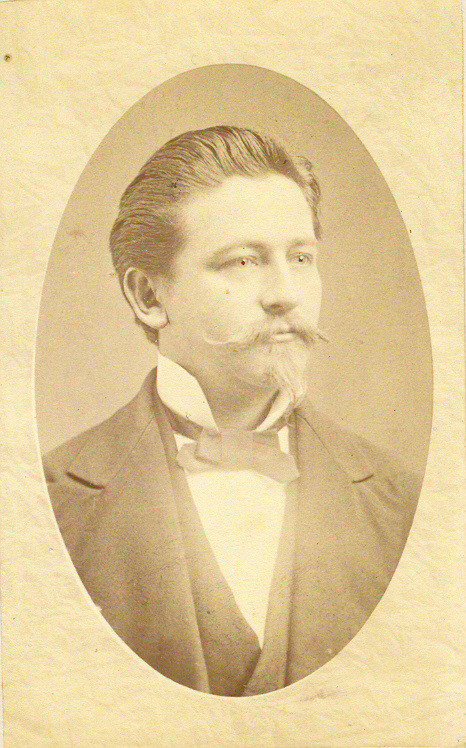 It is no secret that I browse through the intertubes for the collection of beards that I herein present. And if there is one thing that curls the hairs on the back of my neck, it is the misuse of the term goatee.
It is no secret that I browse through the intertubes for the collection of beards that I herein present. And if there is one thing that curls the hairs on the back of my neck, it is the misuse of the term goatee."I do not think that word means what you think it means."
In point of fact, I know by definition that that word does not mean what you think it means. A goatee is a beard on the chin. That's it. Only on the chin. If you have hair above your lip, it is no longer a goatee. And while the website My Ear-Trumpet Has Been Struck By Lightning provides many pictures unique and not available anywhere else, the owner makes the mistake of calling John Schwinghammer's beard a goatee. It is most assuredly not. It is a Van Dyke. Named after 17th century Flemish Baroque painter Anthony van Dyck, it specifically consists of any growth of both a mustache and goatee with all hair on the cheeks shaven.
Ahhhhhh!
OK, I am much better now that I've gotten that out of my system. But really, that is a very nice beard, isn't it?
Sunday, April 15, 2012
The End of an Era
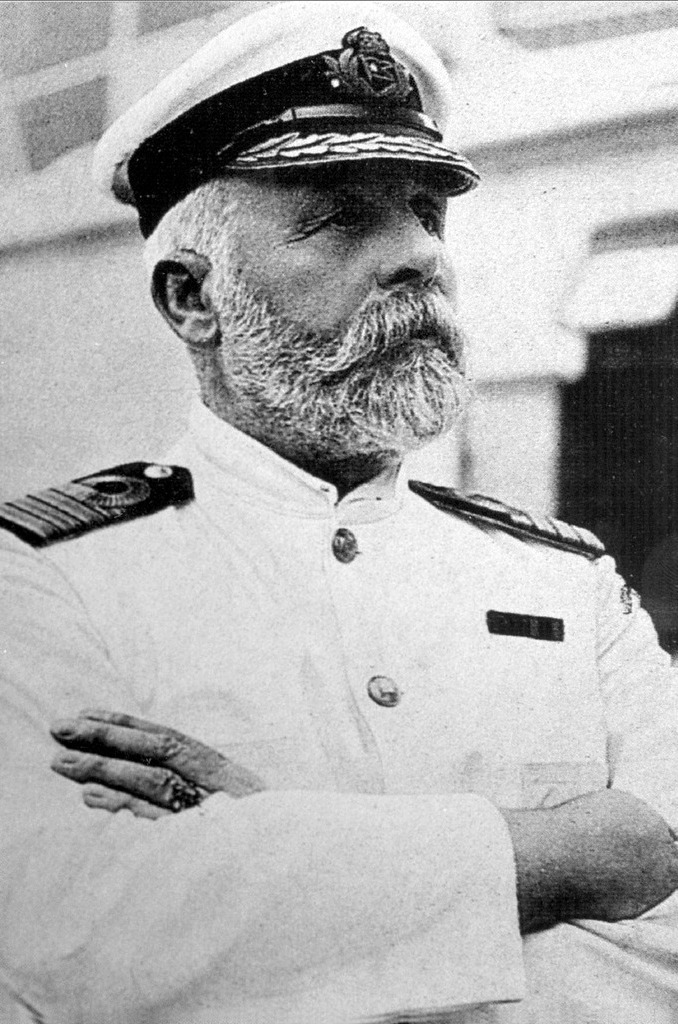 It was just about a century ago that the century of the beard ended. And while Captain Edward John Smith was by no means the last man with a beard and the sinking of the R.M.S. Titanic had no direct effect on the changing fashion, that dramatic event and the Great War that loomed on the horizon bookended what had been a short but dramatic resurgence in the wearing of facial hair.
It was just about a century ago that the century of the beard ended. And while Captain Edward John Smith was by no means the last man with a beard and the sinking of the R.M.S. Titanic had no direct effect on the changing fashion, that dramatic event and the Great War that loomed on the horizon bookended what had been a short but dramatic resurgence in the wearing of facial hair.
Sunday, February 12, 2012
In Russia, beard grows you
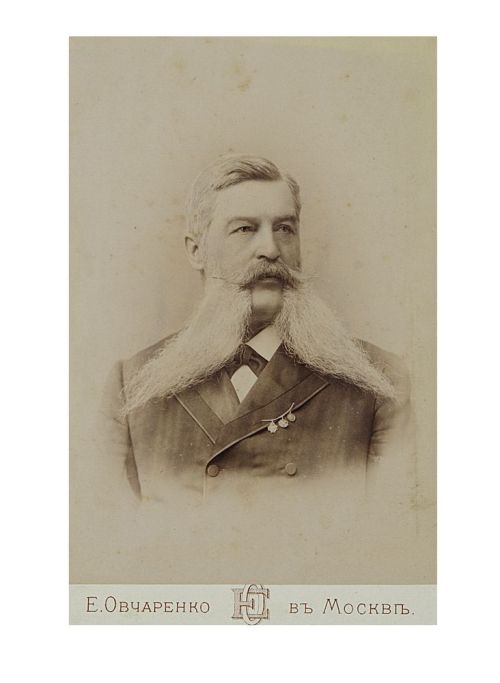 Some beards defy classification.Some are merely difficult to define because of the limitations of technology and time. For example, this Russian gentleman has some spectacular mutton chops.
Some beards defy classification.Some are merely difficult to define because of the limitations of technology and time. For example, this Russian gentleman has some spectacular mutton chops.Or are they?
Do those amazing wings growing on each side of his chin connect to his hairline with sideburns? If so, then these are mutton chops. If they also connect to the mustache then they are a subset of mutton chops called friendly mutton chops.
But what if they don't connect to his hair in front of his ears? What if the upper part of the cheeks where sideburns would go is clean shaven? It's difficult to tell from this photograph. If so, it might be classified as a hollywoodian except for the chin being clean shaven.
And what if the beard is not actually connected to the mustache. I can't even begin to determine how to classify that. "Freestyle" seems to be the convention in the modern taxonomy.
And the entirety of this confusion comes from the photograph. Were this gentleman standing before me, it would be easy to tell where there was hair and where there was not. It may be a little more difficult to classify but at least we would have a starting point
So, for simplicity, I shall declare that there is, in fact, hair in front of the ears and the mustache is connected to the beard, therefore: friendly mutton chops.
Saturday, February 4, 2012
Cowlick
 Oh, yea. He knows absolutely that he has it going on. From the assertive smirk to the massive shirt pin, from the goatee on his chin to the spectacular cowlick atop his head.
Oh, yea. He knows absolutely that he has it going on. From the assertive smirk to the massive shirt pin, from the goatee on his chin to the spectacular cowlick atop his head.This man could probably not only convince you that the moon was made of a specific variation of cheese (similar to a North Wiltshire blue) but could also convince you to invest substantial funds in his soon-to-be-constructed cheese mine.
Chook chooka.
Sunday, January 15, 2012
Jealous
 "Have you ever seen so full and mighty a beard as this?"
"Have you ever seen so full and mighty a beard as this?"Of course you haven't, because this is Sir Sanford Fleming, inventor of time!
OK, so he isn't a Time Lord and didn't actually invent time itself but he was instrumental in convening the International Prime Meridian Conference in Washington in 1884 and the subsequent establishment of global universal time. You see, it works like this: Local time is set by the sun. Noon when it reaches it's zenith. But move 20 miles west and the sun will reach it's zenith a little under 2 minutes later. Not a big deal when you can walk that far in a day but when you ride a train for a day, those miles and minutes can add up to a significant difference. There's a lot of math to be done to get the time correct and then everyone has to do it right, from the train conductor to the guy who sets the town clock tower and if those things don't match up, connections get missed, people are late and all of society breaks down into chaos and general panic.
Additionally, there's that pesky A.M. and P.M. thing. Fleming spent an uncomfortable night in a train station in Ireland because the schedule mixed those two things up. Fleming proposed both the 24 hour universal time clock and the standardized 24 hour time zones so that no one would have to muss their magnificent beards sleeping on a hard, wooden bench in a drafty station ever again. (At least, not because of time miscalculations. )
Thus, civilization was saved.
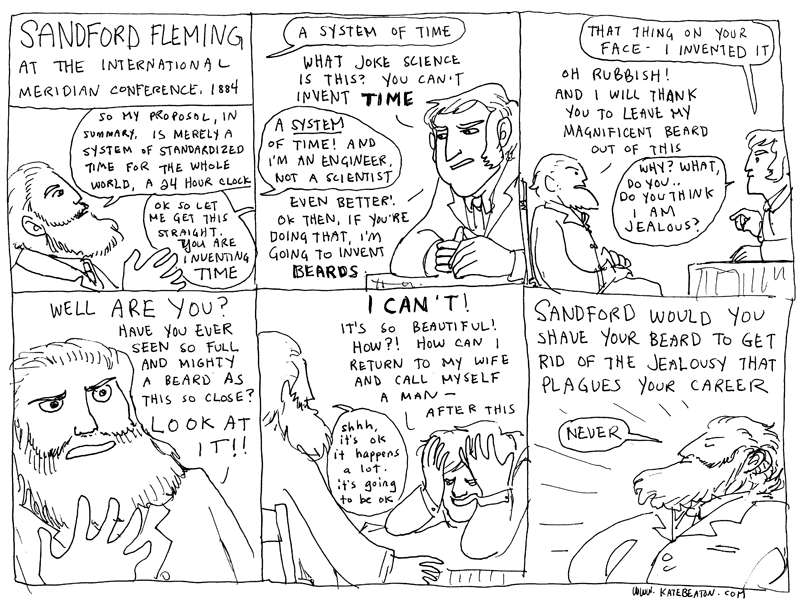
Subscribe to:
Posts (Atom)

